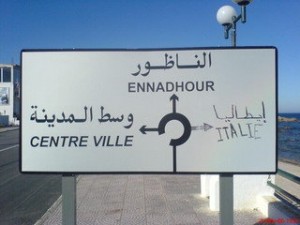On Sunday, April 19th, a boat carrying as many as 950 people capsized in the Libyan waters south of Italy, focusing international attention on the problem of illegal immigration and human trafficking in the Mediterranean. An estimated 800 people drowned in this latest incident, where eyewitnesses stated that hundreds had been locked under the deck of the ship, with no chance of escape. But this shocking tragedy, while it may be the worst to date, is only a fraction of the much larger death toll that has resulted from attempted migration across the Mediterranean, which has reached 1,727 so far in 2015.
The individuals risking their lives to reach Europe through the Mediterranean do so for many, valid, reasons. They flee their home countries to escape war, poverty, or political persecution that has erupted in many African and Middle-Eastern states since the Arab uprisings of 2011. This type of migration is known as “irregular migration,” which involves foreign nationals living in countries in which they do not have a legal status, or foreign nationals working illegally in a country in which they do have a legal status. But, sadly, due to the horrendous and dangerous conditions on many of the boats that carry these migrants, many of them never reach their destination. Migrants often pay large sums of money to owners of vessels to carry them across the sea. However, the vessels are often not equipped to carry the amount of people that are placed on board. This leads to dangerous conditions and wreckage, whereby thousands of migrants have lost their lives in the past several years.
In a special meeting of the European Council on April 23rd, the Council discussed this growing problem and action that could be taken to save lives in the Mediterranean. The President of the European Council, Donald Tusk, urged the Council to take action.
“Saving the lives of innocent people is the number one priority. But saving lives is not just about rescuing people at sea. It is also about stopping the smugglers and addressing irregular migration,” the President urged.
At this special meeting the Council released a statement that included several key promises. The first is to strengthen the EU presence at sea, by tripling the financial support for search and rescue operations. The second objective is to pursue the traffickers themselves, through existing international legal channels. Thirdly, the Council vowed to prevent illegal migration by working with the countries from which the migrants flee in attempts to solve some of the problems that lead to the illegal migration. And lastly, the Council agreed to strengthen cooperation within European Union member states to comply with the Common European Asylum System, which is based on the 1951 Geneva Convention on the protection of refugees, and attempts to maintain a common European policy on protecting those asylum seekers who are fleeing violence in their home countries.
The European Council’s action on this issue is hugely important to finding an end to the tragic loss of life that is happening in the Mediterranean. But the UN is also recognizing that the problem is a global issue of human rights, and is taking action of several fronts as well. The UN Refugee Agency has been assisting those who are rescued at sea or attempting to make the journey to pursue asylum status, but this often means taking the refugees to detention centers where conditions are very poor. In an April 19th press statement, UN High Commissioner for Refugees António Guterres stressed that finding a solution to the problem will involve not only helping those who are seeking asylum, but attempting to “address the root causes” of the migration that’s happening in the Mediterranean.
Find more information about this issue with the resources below.
Web Resources
European Union – Clandestino – Database on Irregular Migration
CBS News – Death in the Mediterranean
Scholarly Articles (Available through UIUC Online Journals and Databases)
Battaini-Dragoni, Gabriella. 2002. “The Distinctive Role of the Council of Europe in Migration Management: The Case of the Euro-Mediterranean Region.”European Journal Of Migration & Law 4, no. 4: 1-497. Academic Search Complete, EBSCOhost (accessed April 30, 2015).
Mountz, A., & Loyd, J. M. (2014). Constructing the Mediterranean Region: Obscuring Violence in the Bordering of Europe’s Migration “Crises”. ACME: An International E-Journal For Critical Geographies, 13(2), 173-195.
Raeymaekers, T. (2014). Introduction Europe’s Bleeding Border and the Mediterranean as a Relational Space. ACME: An International E-Journal For Critical Geographies, 13(2), 163-172.
Books (Available through UIUC Libraries)
Lazaridis, Gabriella (2010). Security, insecurity, and migration in Europe. Burlington, VT : Ashgate.
Tapia, Stéphane de. (2008). The Euro-Mediterranean migration system. Strasbourg : Council of Europe Pub.
Kneebone, Susan,, Stevens, Dallal,Baldassar, Loretta. (Eds.) (2014). Refugee protection and the role of law :conflicting identities. New York, NY : Routledge, 2014.


Comments are closed.